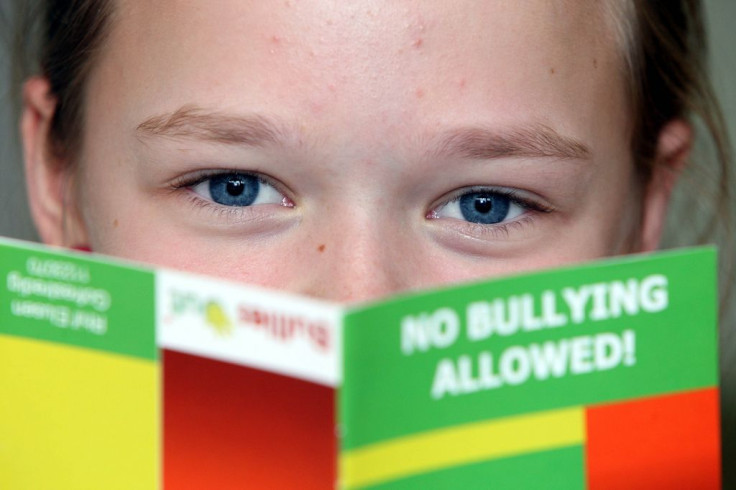Anti-Bullying Laws In 25 States Lead To Major Reductions In Bullying And Cyberbullying Rates

Recent data from the Department of Education’s National Center for Education Statistics (NCES) has shown that the nation’s bullying rates finally dropped to 22 percent in 2013 after remaining at 28 percent over the past decade. A new study conducted at the Columbia University's Mailman School of Public Health reveals that anti-bullying laws in compliance with the Department of Education’s guidelines have had a significant impact on both traditional bullying and cyberbullying rates in the U.S.
"Though bullying is the result of a complicated set of social, psychological, and peer impulses, we now see that laws aimed to reduce bullying are successful," said Dr. Mark Hatzenbuehler, associate professor of Sociomedical Sciences at Columbia University's Mailman School of Public Health, in a statement. "While policies alone cannot completely eradicate bullying, these data suggest that legislation represents an important part of a comprehensive strategy to prevent bullying."
Hatzenbuehler and his colleagues gathered responses from over 60,000 high school students who took part in the 2011 Youth Risk Behavior Surveillance. Responses were compared to the Department of Education’s data on anti-bullying legislation in 25 states, with each state receiving a compliance score for 16 components identified by the DOE. The state’s historical bullying rates and violent crime rates were accounted for to ensure the results were unaffected. Bullying and cyberbullying are considered the most common forms of peer aggression.
The research team identified three components of successful anti-bullying state laws. The first was a description of where schools can intervene in the event of a bullying case, such as on school grounds or at home. The second was a clear definition of bullying. The third was a requirement that schools have a local policy or a timeline when a policy must be enacted. Communication of the state’s policies, how to train school officials, and a detailed list of students at risk for bullying also helped curb bullying rates.
"Bullying is a common experience among children, and passing legislation to curb bullying is an important prevention strategy," said co-author Dr. Marizen Ramirez. "However, research on the effectiveness of these laws has been lagging. This research represents an important step in linking public health research with the practice of public health law. Moving forward, this collaboration will help identify what laws are most effective in curbing bullying in schools."
States that added at least one component of anti-bullying laws were home to high school students that were 24 percent less likely to report traditional face-to-face bullying and 20 percent less likely to report cyberbullying compared to students in states without anti-bullying legislation. Among states with anti-bullying laws, Alabama ranked lowest with face-to-face bullying rates of 13 percent and cyberbullying rates of 12 percent. The average among all 25 states was recorded at 15.5 percent.
Although there is currently no federal law that addresses bullying, bullying cases are often covered under federal civil rights laws for discriminatory harassment. For example, schools are legally obligated to address conduct that is considered severe or persistent, contributes to a hostile environment, or based on a student’s race, color, nationality, sex, disability, or religion.
Source: Schwab-Reese L, Ranapurwala S, Hertz M, Ramirez M, Hatzenbuehler M. Associations Between Antibullying Policies and Bullying in 25 States. JAMA Pediatrics. 2015.



























